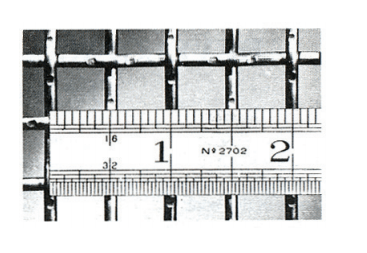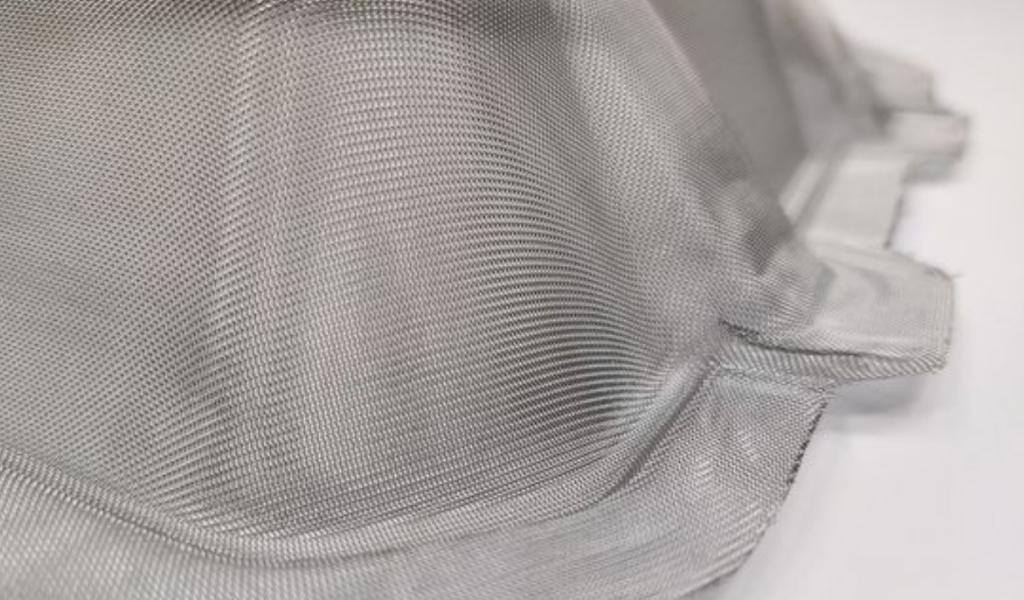Forming Wire Mesh for Molded Pulp: Benefits, Process & Challenges
Today’s world of sustainable molded pulp production is fast-paced, with success coming down to the small details—like the formed wire mesh molds at the heart of every dependable pulp molding process. While it may seem like a simple material, woven wire mesh is paramount to the quality of your products and the efficiency of your production line.
Now, picture this: your production line, which has developed a reputation for producing industry-leading molded pulp products, becomes hindered by clogged molds, inconsistent pulp distribution, or deformed wire mesh molds. Ultimately leading to an unsatisfactory end product, these issues can negatively affect your bottom line and reputation.
It is for this reason that you must understand how to properly form, use, and maintain wire mesh molds.
For over 150 years, W.S. Tyler has been a leader of innovation in the wire weaving industry, delivering tailor-made solutions that help make the world a cleaner, safer place to live.
And with that, we wrote the following article to provide an in-depth look into everything you need to know about forming wire mesh molds—from what woven wire mesh is to the key factors that influence its performance when molding pulp. You will learn:
- What woven wire mesh is
- The benefits of using woven wire mesh for molded pulp applications
- Why it's important that your wire mesh molds are formed properly
- How to properly form wire mesh molds
- The factors that influence wire mesh mold performance
- The common issues that can occur when forming wire mesh molds
- How you can prevent the common issues that occur when forming wire mesh molds
What Is Woven Wire Mesh?

Woven wire mesh is a screening material precisely engineered to deliver a durable, highly customizable solution that grants you complete control over parameters such as percentage of open area, mesh count, and wire diameter. Constructed by weaving hundreds of metal wires until a uniform, grid-like pattern is formed, wire mesh can be woven from a number of alloys—most commonly stainless steel—offering the perfect balance of strength and throughput.
As a result, wire mesh has become the go-to screening solution for demanding pulp molding processes.
In fact, woven wire mesh is heavily regarded as a foundational component in mold tooling. When properly integrated, you empower your operation to yield consistent, high-quality molds that offer the performance end consumers look for.
Read the article below and get to know woven wire mesh inside and out:
Why Integrate Woven Wire Mesh Into Your Pulp Molding Production Line?
Woven wire mesh can prove indispensable in the pulp molding process. With the right wire mesh specifications, the material can provide optimal durability, flow capacity, and stability—all leading to unmatched performance.
Superior Drainage
Balancing the wire diameter and mesh count allows you to implement a percentage of open area that promotes rapid water drainage. In turn, molds that are strong, well-formed, and consistent are produced with minimal energy needed during the drying phase.
Dimensional Stability
With the use of a reliable annealing process and proper upkeep, woven wire mesh will maintain its shape and precise qualities even after prolonged use. This helps ensure your molded pulp products accurately capture every detail of your molds.
Customizable
Virtually every aspect of woven wire mesh can be tailored to the exact needs of your process. This includes mesh count, wire diameter, alloy, and any other parameter needed to ensure your slurry and mold complexity are properly accommodated.
Peak Durability
As woven wire mesh can be constructed from a wide variety of alloys, it has become widely known for its resistance to corrosion, mechanical wear, and process-related stress. It’s because of this that wire mesh provides superior performance in high-volume operations.
Ideal Mold Quality
You can adjust the mesh count of your wire mesh molds to ensure even fiber distribution and an improved surface finish. This, in turn, reduces both rejected molded parts and post-processing needs.
Why Is Proper Mold Formation Critical to the Production Process?
During the pulp molding process, properly crafting woven wire mesh molds is the foundation of the efficient production of consistent, high-quality molded pulp. Failure to form reliable wire mesh molds ultimately prevents the fibers in your slurry from distributing evenly across the surface of the mold.
The result is molded pulp products plagued with defects like weak spots and surface inconsistencies. Not only do these defects compromise the structural integrity of the end product, but—depending on your quality control program—they can cause a spike in material waste, downtime, and reruns.
Conversely, if your production line is outfitted with wire mesh molds that have been meticulously formed, you’ll find that elements like water drainage and product dimensions are optimized. In other words, reliable wire mesh molds facilitate the production of high-quality molded pulp, reduce material waste, and improve the overall efficiency of your pulp molding production line.
Not to mention that when your wire mesh molds are properly formed and function without your pulp molding machine working against them, they last longer. Naturally, this means maintenance and wire mesh replacement are minimized.
What Are the Key Steps Involved in Forming a Woven Wire Mesh Pulp and Fiber Mold?
There are several critical steps that go into forming woven wire mesh molds that meet your performance and durability standards. The fabrication process typically starts with a design phase.
You must take the time to design a mold that captures the shape and dimensions of the final product.
At this point, you’ll want to cut the wire mesh into easy-to-handle sections. This makes it easier to press, form, and shape the mesh over master dies.
NOTE: To ensure your wire mesh captures every detail of your master die while maintaining its uniformity and structural integrity, you will want to have it annealed.
Find out why in the article below:
Once formed, the edges of the mesh molds should be trimmed to remove excess material, ensuring a glove-like fit once inserted into your pulping machine. That said, wire mesh molds are typically accompanied by support components for reinforcement.
As with most wire mesh components, wire mesh for molded pulp applications is typically woven using a stainless steel alloy due to the balance of strength and corrosion resistance it offers.
Before fully integrating your wire mesh molds into your production line, they should be run through a quality control check. During this step, you’ll want to verify things like drainage capacity and overall functionality when interacting with your slurry mixture(s) to ensure your wire mesh molds can deliver the performance you need.
NOTE: Any traces of warping or imperfections in the molded pulp should be treated as an indication that adjustments need to be made before being introduced to full production.
What Factors Influence the Effectiveness of a Woven Wire Mesh Mold?
Several elements can make or break the effectiveness of woven wire mesh when applied to molded pulp applications. The most prominent include mesh count, wire diameter, and material quality.
Mesh Count

The mesh count you choose translates to how well water is drained and how much fiber is retained as the slurry forms around the mold. Coarser mesh counts, like a 24 mesh screen, allow higher volumes of water to drain, whereas finer mesh counts—like W.S. Tyler’s specialty 50 mesh—retain smaller fibers and fines.
Want an inside look into how 24 mesh and 50 mesh wire mesh molds compare? Read the article below:
Wire Diameter

The diameter of each individual wire ultimately influences how durable your mesh molds are and how long they will last. Thicker wire diameters produce molds that are more robust, ensuring they maintain peak performance when subjected to vacuum pressure and high-volume production. Thinner diameters, meanwhile, increase the percentage of open area, facilitating faster drainage.
Material Quality

Woven wire mesh is commonly made from 304 or 316 stainless steel. These materials are chosen for their ability to operate in wet environments and resist corrosion. High-quality stainless steel holds up under repeated wet and dry cycles—something lower-grade alloys simply can’t match.
Using high-quality alloys ensures your wire mesh molds maintain their shape, deliver peak drainage, and uphold dimensional precision—all critical to producing reliable, high-quality molded products.
What Are the Common Issues Encountered When Forming Woven Wire Mesh Molds?
Naturally, several issues can arise when forming wire mesh. These issues often impact mold performance and, more importantly, the quality of the final product.
One of the most common issues is clogging. This occurs when fibers accumulate within the mesh openings, reducing drainage capacity, increasing system pressure, and causing uneven pulp distribution. Left unaddressed, clogs can lead to permanent mold and machine damage.
Deformation is another key issue. It happens when the mesh bends, warps, or stretches during the molding process—typically in meshes with thinner wire diameters. Deformation alters mold shape, resulting in inconsistent product dimensions and poor structural integrity.
Sticking or release issues—often called “double ups”—occur when wet pulp adheres too strongly to the mesh surface. This can lead to torn molded products and pulp residue buildup, which further degrades mold performance over time.
Improper mesh tensioning can also cause sagging, negatively impacting pulp distribution. Uneven distribution creates weak spots that compromise product durability and thick areas that waste material and slow drying times.
How Do I Prevent Setbacks When Forming Wire Mesh Molds?
Several preventive actions can ensure your wire mesh molds produce high-quality molded pulp products. A combination of proper setup, strategic reinforcement, consistent tensioning, and regular maintenance is key to long-term success.
Start by ensuring your mesh molds are under adequate tension. Proper tension promotes even pulp laydown, helping to prevent sagging and thickness inconsistencies.
Implement a durable, corrosion-resistant frame—stainless steel or aluminum are excellent options. These allow your mesh to be mounted with uniform tension while reinforcing stress-prone areas.
You might also consider a double-layer configuration, using a finer mesh (like 50 mesh) over a coarser mesh (like 24 mesh). This technique enhances strength, drainage capacity, and fiber retention.
Stick to a regular cleaning schedule, using water or mild detergent, and inspect your molds for wear, stretching, or damage. Just as important, fine-tune your vacuum pressure and slurry mix to best align with your mesh configuration.
With these practices in place, you’ll extend the life of your molds, minimize downtime, and produce high-quality molded pulp products consistently.
Perfect Your Pulp Molding Process With Deep Drawn Wire Mesh
Woven wire mesh is pivotal to the performance and reliability of molded pulp production. Understanding how to properly form it—and how to combat common forming issues—ensures you’re equipped to boost your production efficiency and product quality.
As demand for molded pulp packaging increases, product designs are becoming more complex, often requiring more than standard forming techniques. When your molds need to support sharp angles, deep cavities, or intricate shapes, it’s time to explore deep drawing.
At W.S. Tyler, our mission is simple: equip woven wire mesh users across the world with the knowledge needed to overcome the roadblocks that hinder innovation.
Ready to dive into the world of deep-drawn wire mesh molds for molded pulp applications?
Read our next article to learn everything you need to know to craft wire mesh molds that yield more advanced, high-performing molded pulp products:
About Ronnie Brown
Ronnie is the Content Writer for W.S. Tyler and has four years of experience as a professional writer. He strives to expand his knowledge on all things particle analysis and woven wire mesh to leverage his exceptional writing and graphic design skills, creating a one-of-a-kind experience for customers.




